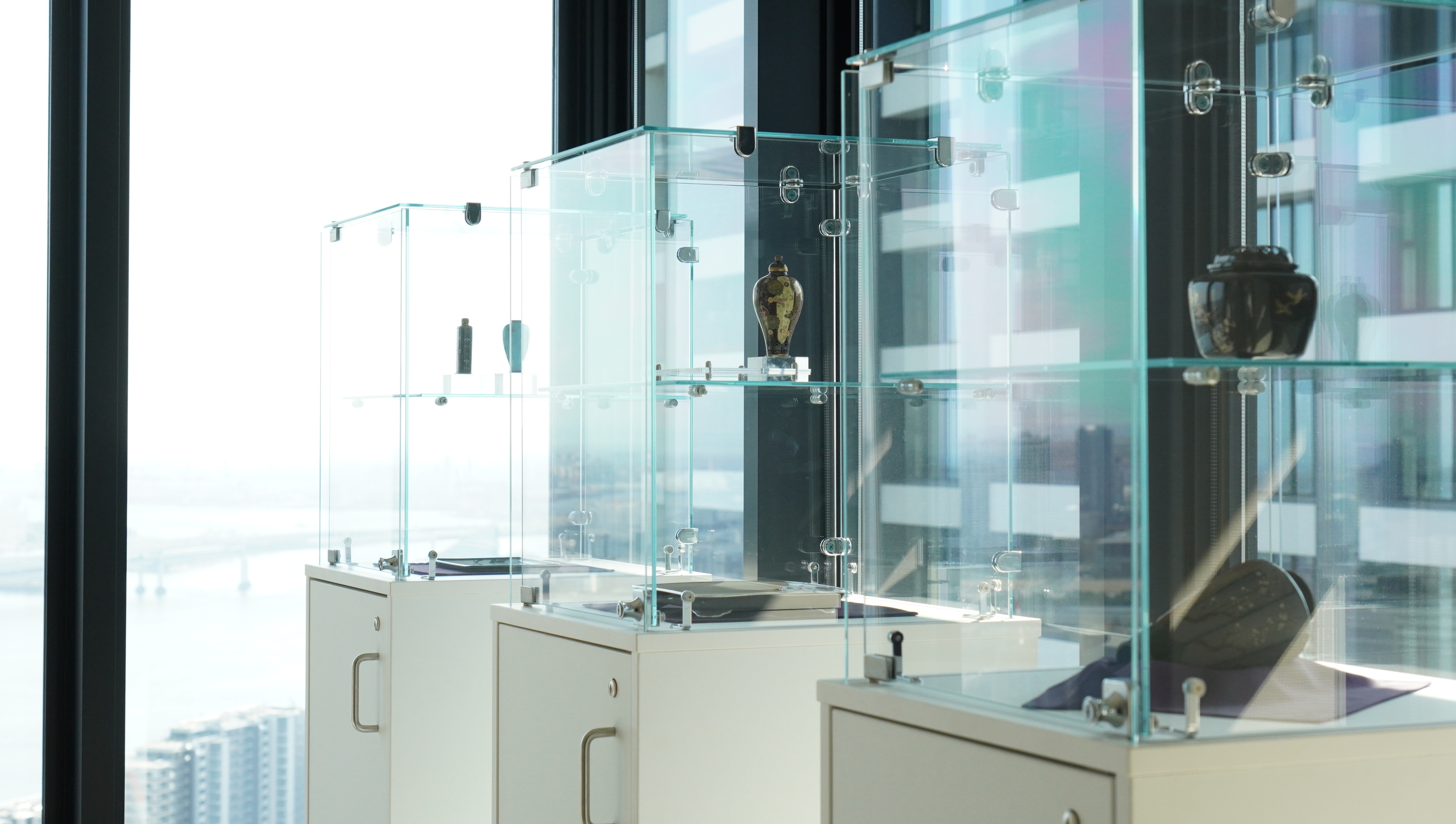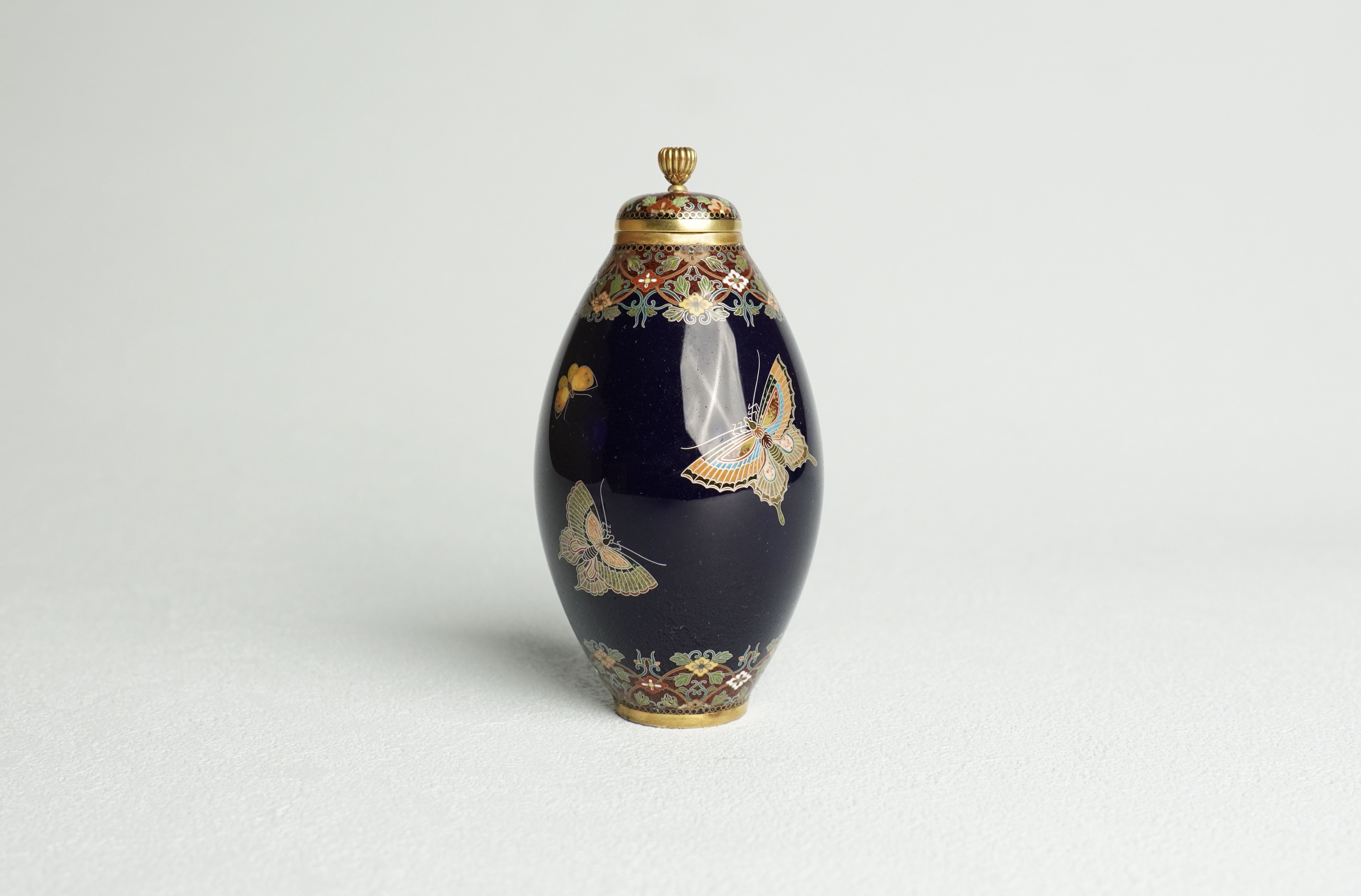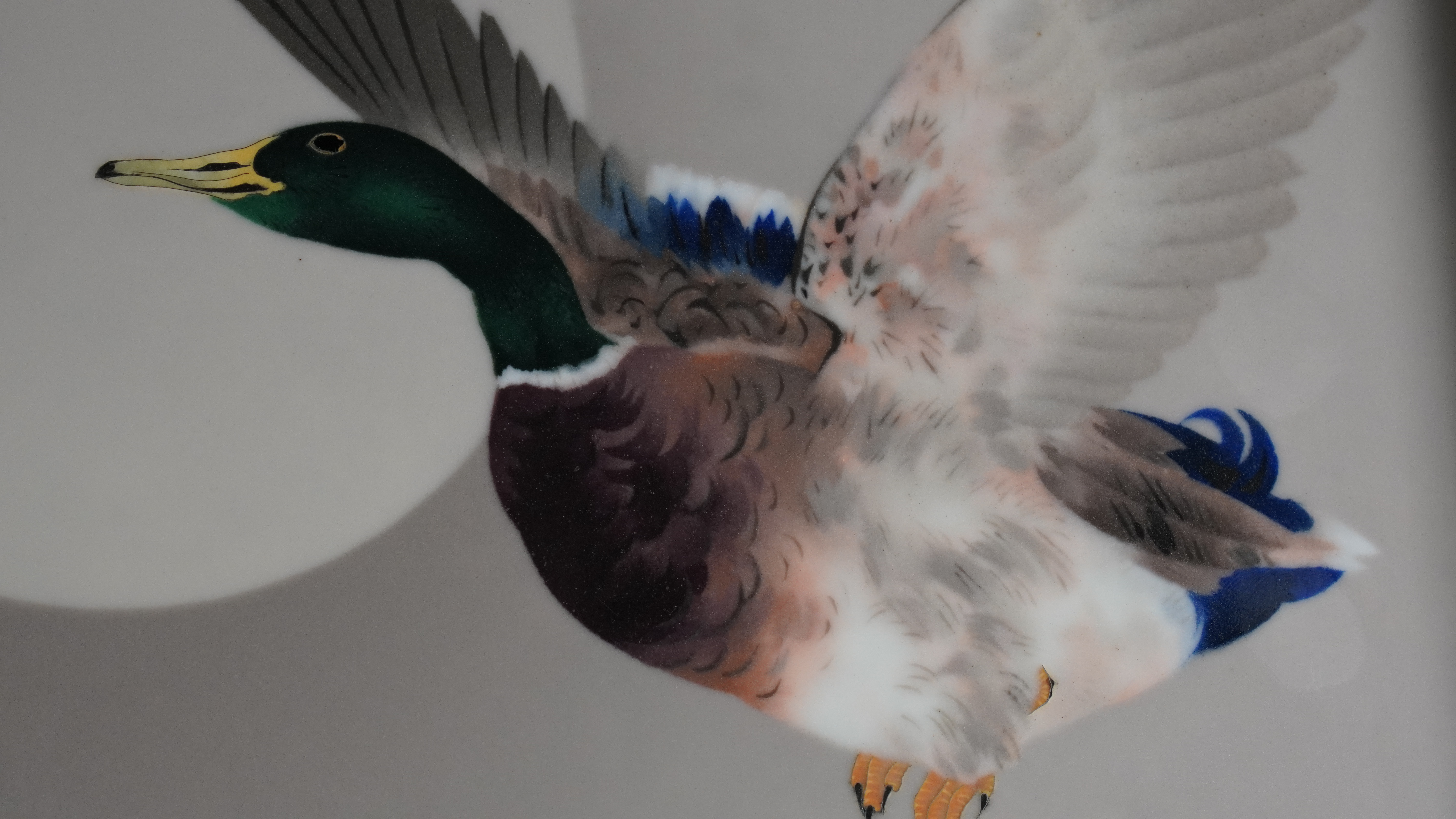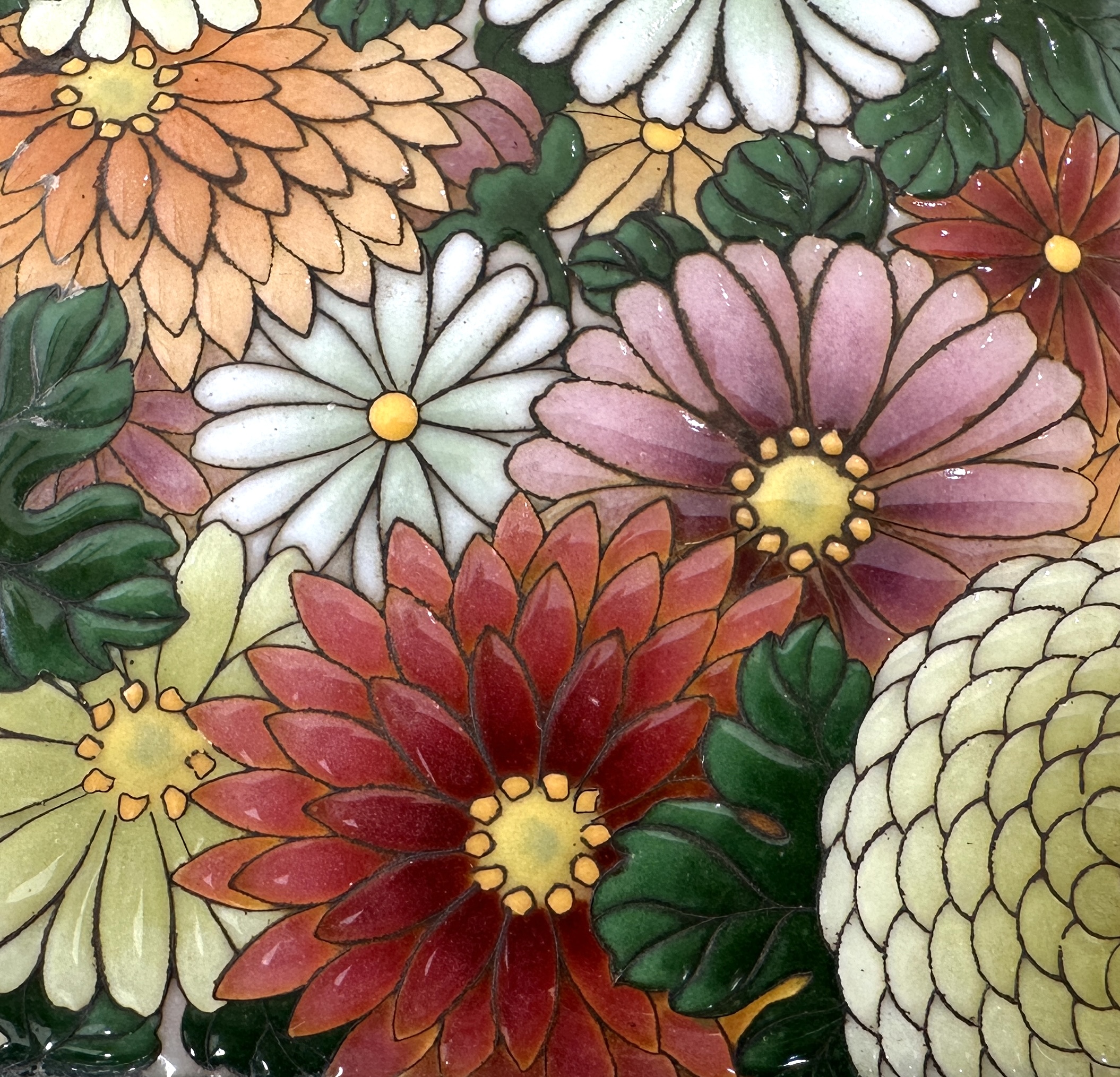【Explanation of Nanikawa Yasuyuki cloisonne enamel ware works】Representative works,characteristics,and changes in his works
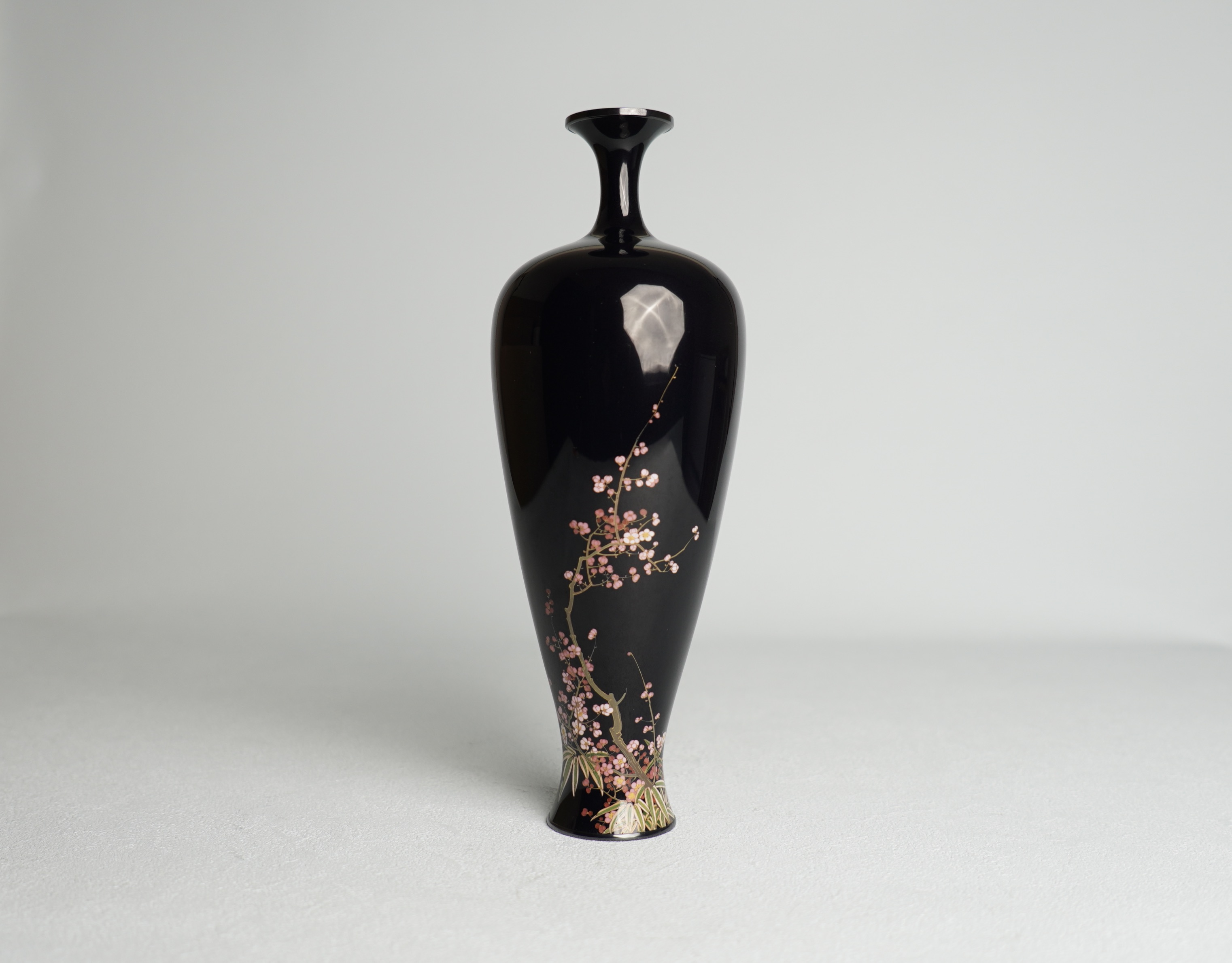
Yasuyuki Namikawa dominated the cloisonne enamel ware world in the Meiji era. However, few people may know in detail about his works, their changes, and his relationship with his rival, Sosuke Namikawa.
“What kind of person is Yasuyuki Namikawa?”
“What are the characteristics of Yasuyuki Namikawa’s works?”
“What are the representative works of Yasuyuki Namikawa?”
“What is the relationship between Yasuyuki Namikawa and Sosuke Namikawa?”
If you are reading this article, you probably have many questions about Yasuyuki Namikawa.
In this article, you will get an in-depth look at the personality of Yasuyuki Namikawa his representative works, the characteristics of his works and the changes in his style.
And you will not only deepen your understanding of cloisonne enamel ware, but also grasp the trends in the art world of the Meiji era that are behind it.
By reading this article, you will not only see the works of art, but also understand the stories and historical background behind them, which will deepen your understanding of the artworks, so please read on.
Now, allow me to start.
NAMIKAWA YASUYUKI
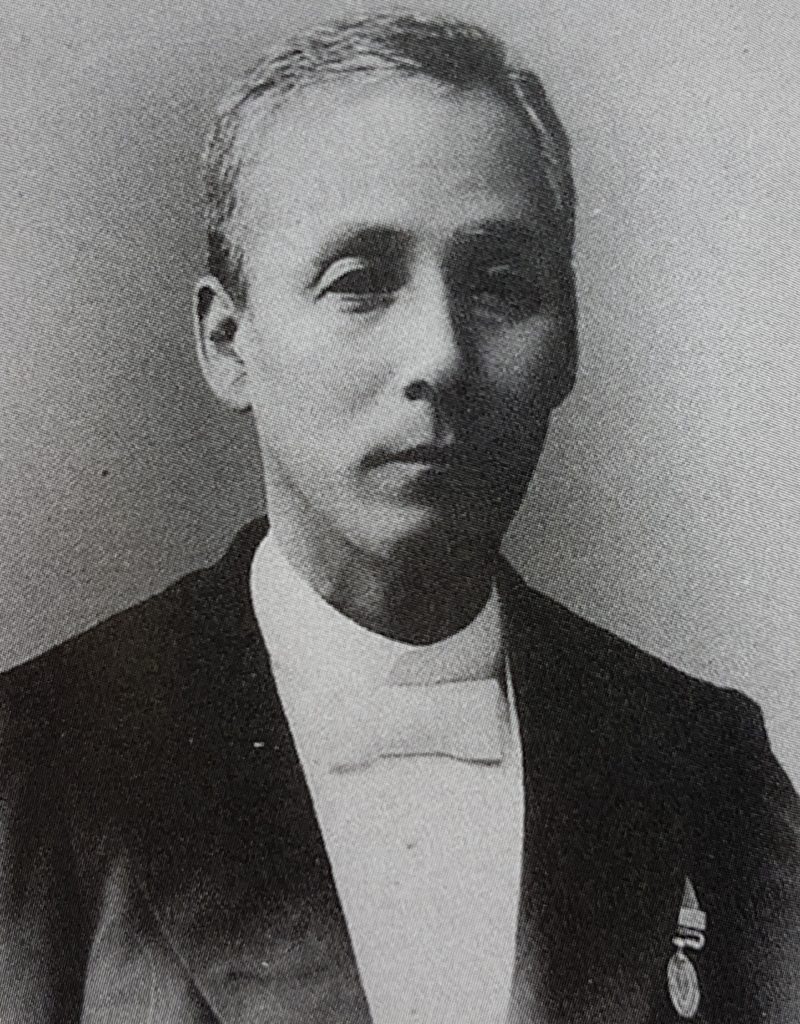
Yasuyuki Namikawa is one of the masters of Japanese cloisonne enamel ware techniques, and his works are highly acclaimed even to this day.
Throughout his life, Yasuyuki created detailed and colorful works of art, which have become recognized worldwide for their overwhelming technical skill and artistic quality.
並河靖之 代表作

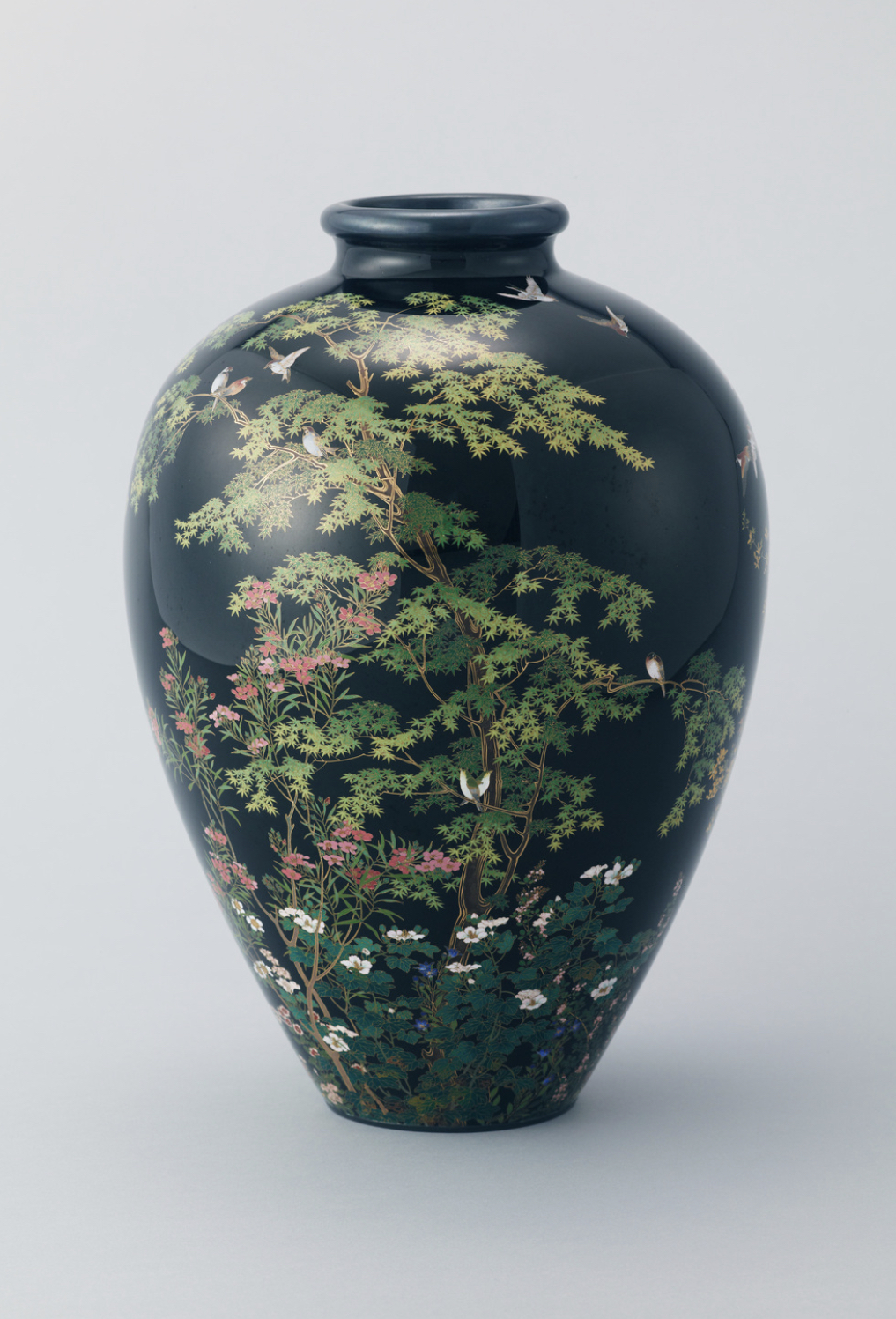
One of the most famous of Yasuyuki Namikawa’s works is the “Cloisonne Vase with Four Seasons Flowers and Birds”.
This work was created by order of the Emperor Meiji to be exhibited at the Paris Exposition of 1900. It was awarded a gold medal at the Paris Exposition and is now in the collection of the San-no-Maru Shozokan as one of Yasuyuki Namikawa’s representative works.
The flower-and-bird design is gorgeously painted with gold lines on a black transparent glazed background. The thickness of the gold lines has been changed to make it look as if it were painted with a brush.
This is a gorgeous and skillful work that is worthy of being a masterpiece.
Characteristics of Yasuyuki Namikawa’s Works
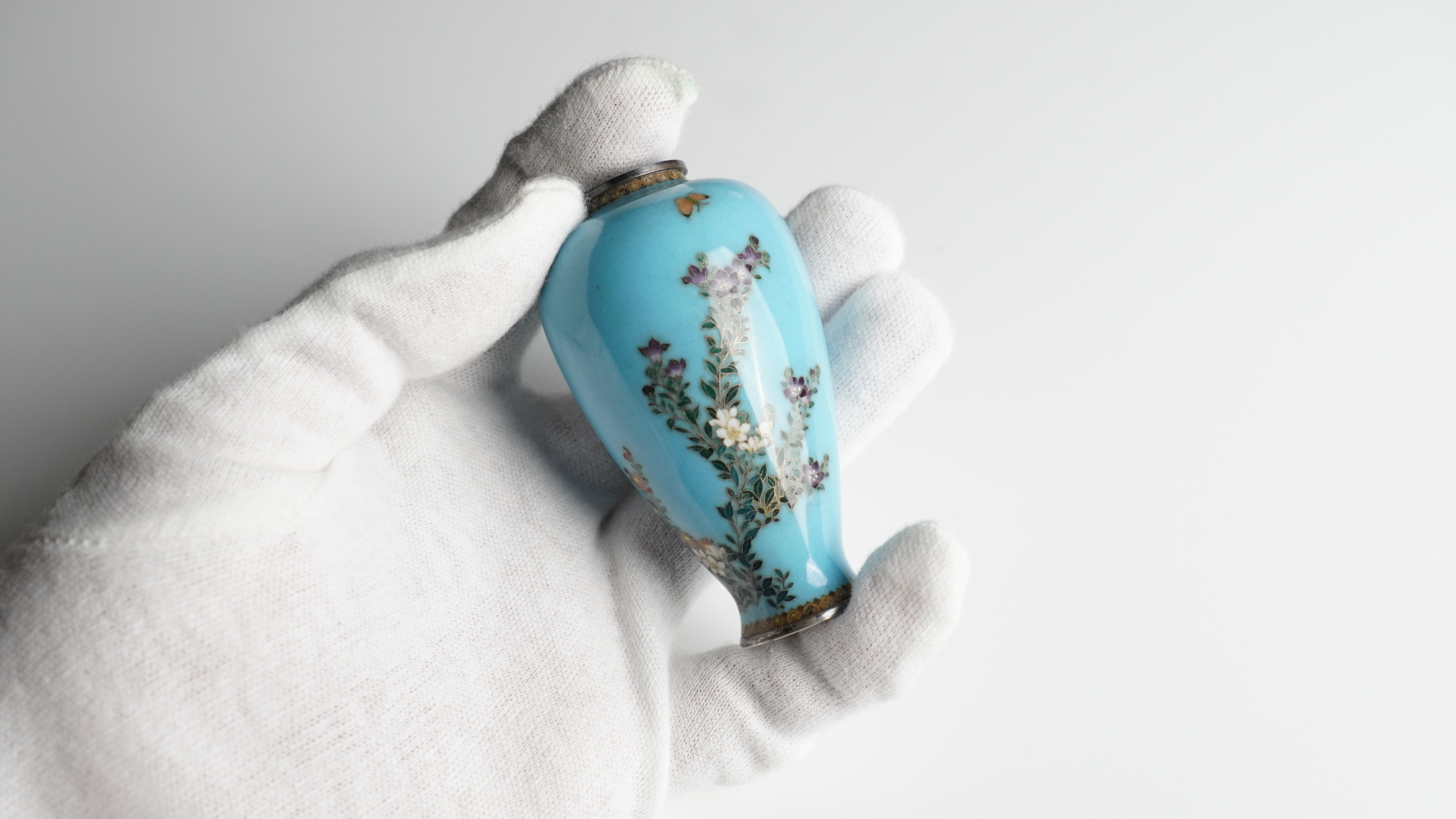
The works of Yasuyuki Namikawa dominated the world with his cloisonne enamel ware technique and gorgeous colors.
Yasuyuki Namikawa’s works incorporate techniques such as engraving and inlaying, and often depict nature, landscapes, and people’s daily lives.
There are three main characteristics of Yasuyuki Namikawa’s works.
Characteristic 1: Richness of Color
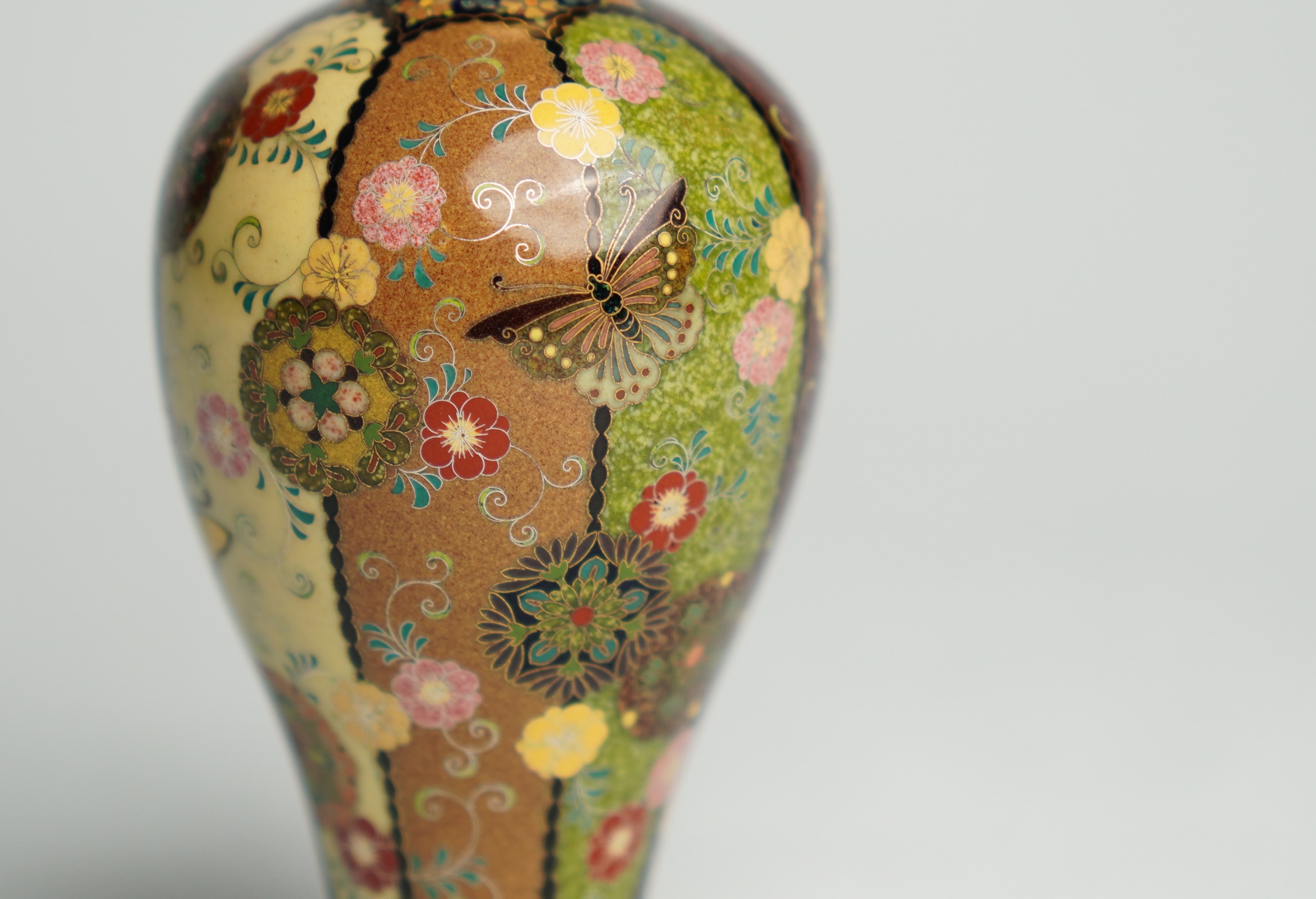
Yasuyuki Namikawa’s work is characterized by the vivid colors he uses. This is a characteristic often seen in cloisonne enamel ware, but it is even more pronounced in his works and has the power to catch the viewer’s eye.
Characteristic 2: Intricate workmanship
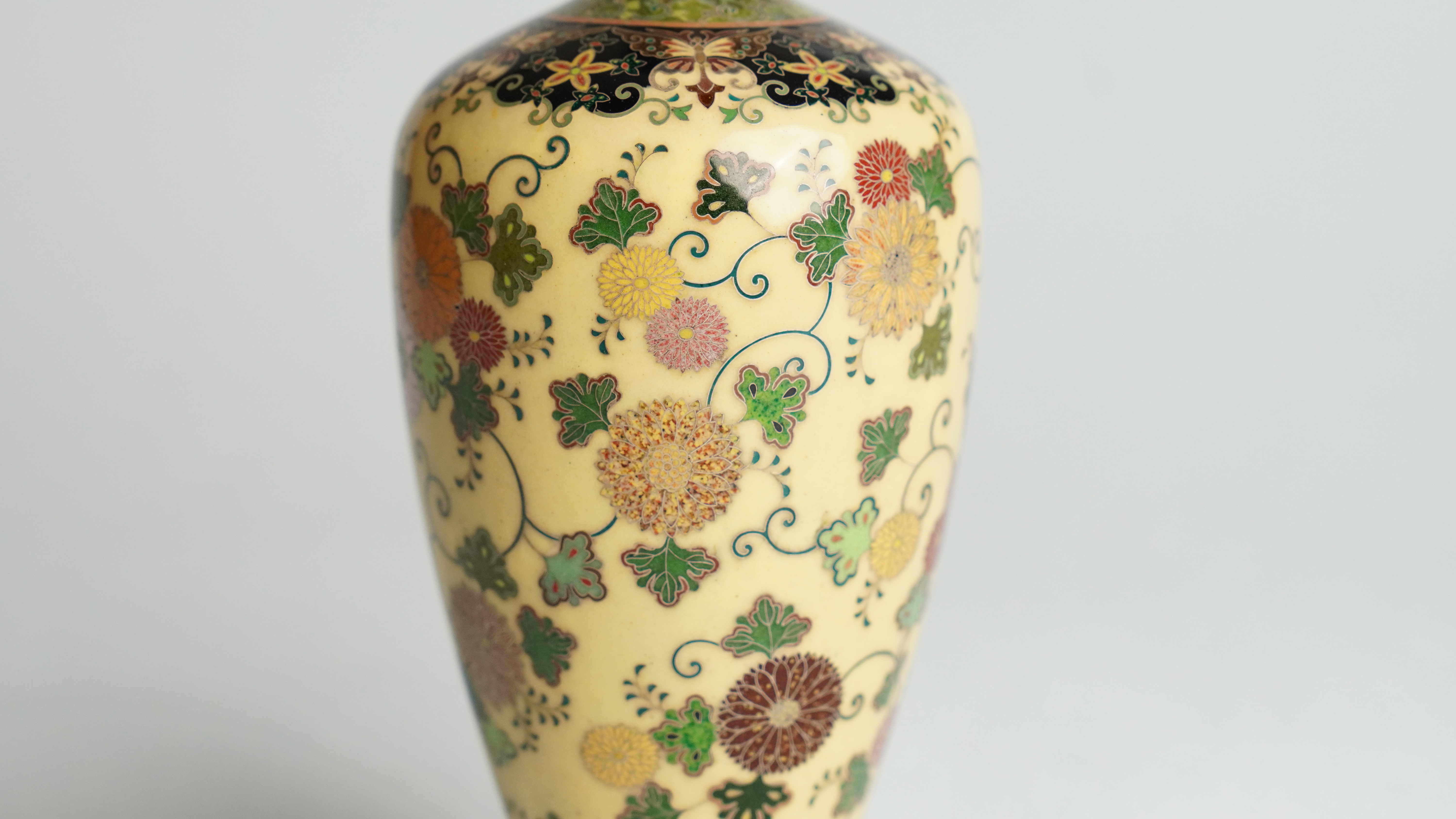
One of the outstanding characteristics of Yasuyuki Namikawa’s work is its meticulous craftsmanship. Each piece is made with painstaking attention to detail, and his technical skill is unrivaled.
Feature 3: Naturalistic Design

Yasuyuki Namikawa’s works often contain elements of nature. Flowers, birds, landscapes, and other elements of nature inspired many of his works, which gives them depth and life.
Changes in Yasuyuki Namikawa’s Works
Yasuyuki Namikawa’s work has changed many times throughout his life.
In his early works, he often utilized traditional cloisonne enamel ware techniques, and then gradually began to pursue his own unique sense of color and design.
In his later works, his use of bolder colors and freer shapes increased, and his own artistic vision was strongly expressed.
Yasuyuki Namikawa, together with Tessen Nakahara and others, mastered wired cloisonne enamel ware.
Wired cloisonne is a technique in which gold or silver lines are taped to a metal body as outlines of a pattern, and glaze is applied between the lines, and firing and polishing are repeated.
His works, including pots and vases exhibited at expositions in Paris, Chicago, London, and Barcelona, as well as at the National Industrial Exhibition, have received numerous awards, including gold medals, and have been highly acclaimed both in Japan and abroad.
Namikawa’s cloisonne enamel ware style changed with his encounter with Wagner, a German scientist at the Kyoto Shaman’s Bureau, and the black transparent glaze he developed himself.
1873 to 1878 Early Works

Namikawa’s early pots were fully decorated with swirls and other patterns characteristic of Kyoto cloisonne enamel ware of the early Meiji period. Around 1877, Namikawa’s cloisonne enamel ware style underwent a major change following his encounter with Gottfried Wagener at the Kyoto Shakai Bureau.
Wagener was hired by the governor of Kyoto Prefecture at an unbeatable salary to give lectures on the production methods of ceramics, cloisonne ware, and glass, and to provide general guidance at national industrial expositions.
1878 to 1895 Works from the Second Period

Wagner’s instruction was based on his strict assessment that “Kyoto cloisonne enamel ware would not be accepted at world expositions.” Namikawa’s works of this period often incorporated traditional designs such as dragons, phoenixes, flowers, and birds, which reflected courtly culture, surrounded by fine scrolling axis patterns. Complex trim around the pots and around the feet, and the butterfly motif, which was the Namikawa family crest, became more common.
1895 to 1903 Works from the Third Period
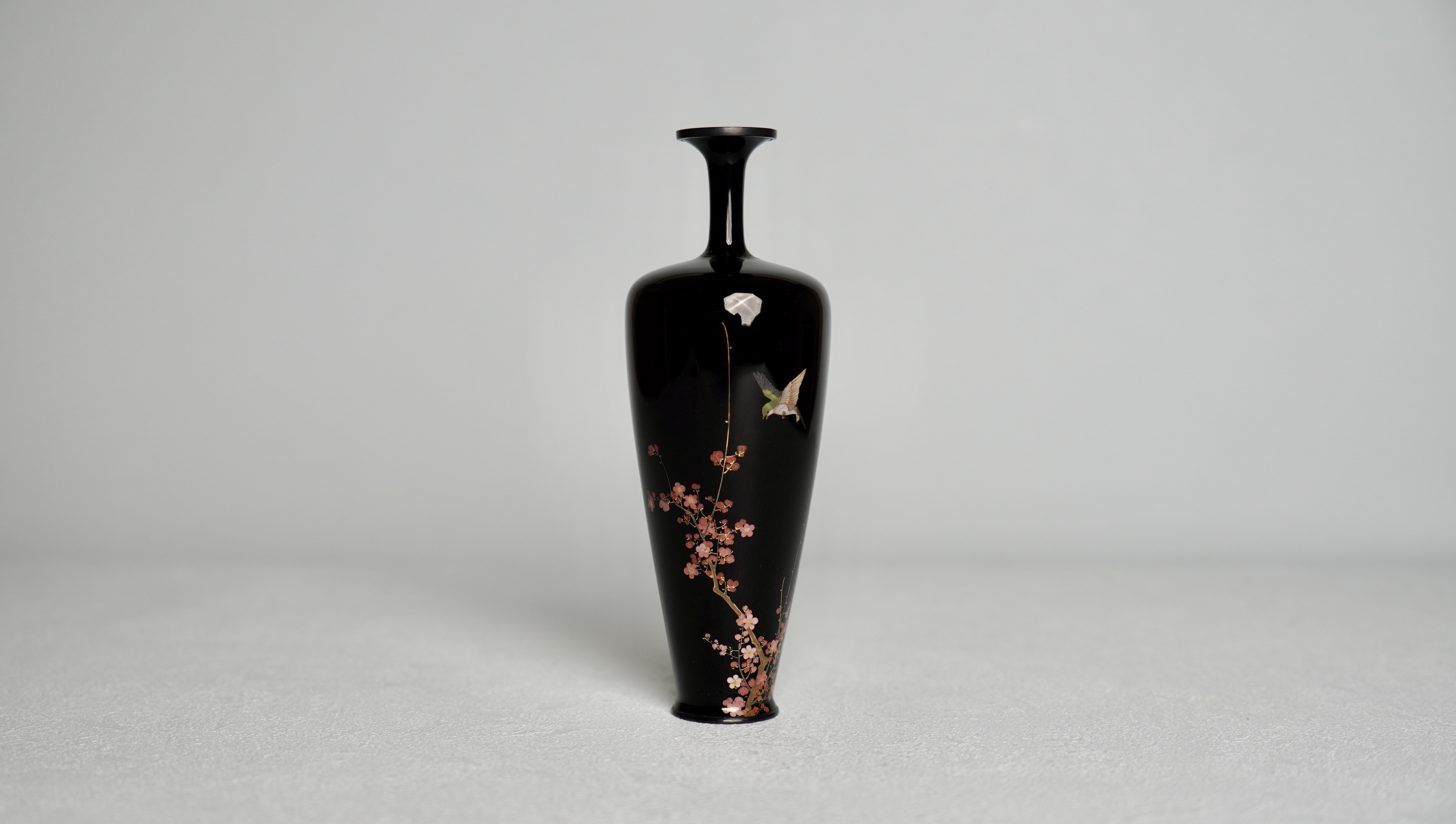
In the third period, more and more works were produced using a jet-black transparent glaze called “Namikawa black,” which had already been developed through independent research, for the backgrounds. By dyeing the backgrounds of pots and vases black, the colors of the designs stand out and gradations and rich colors can be expressed.
It is said that only Yasuyuki Namikawa was able to express the transparency of black.
The scroll patterns that had been used in past works became less common, and large, delicate designs of butterflies, flowers, and grasses were painted. Namikawa went on to win awards at various national and international expositions.
1903 to 1923 Works from the Late Period
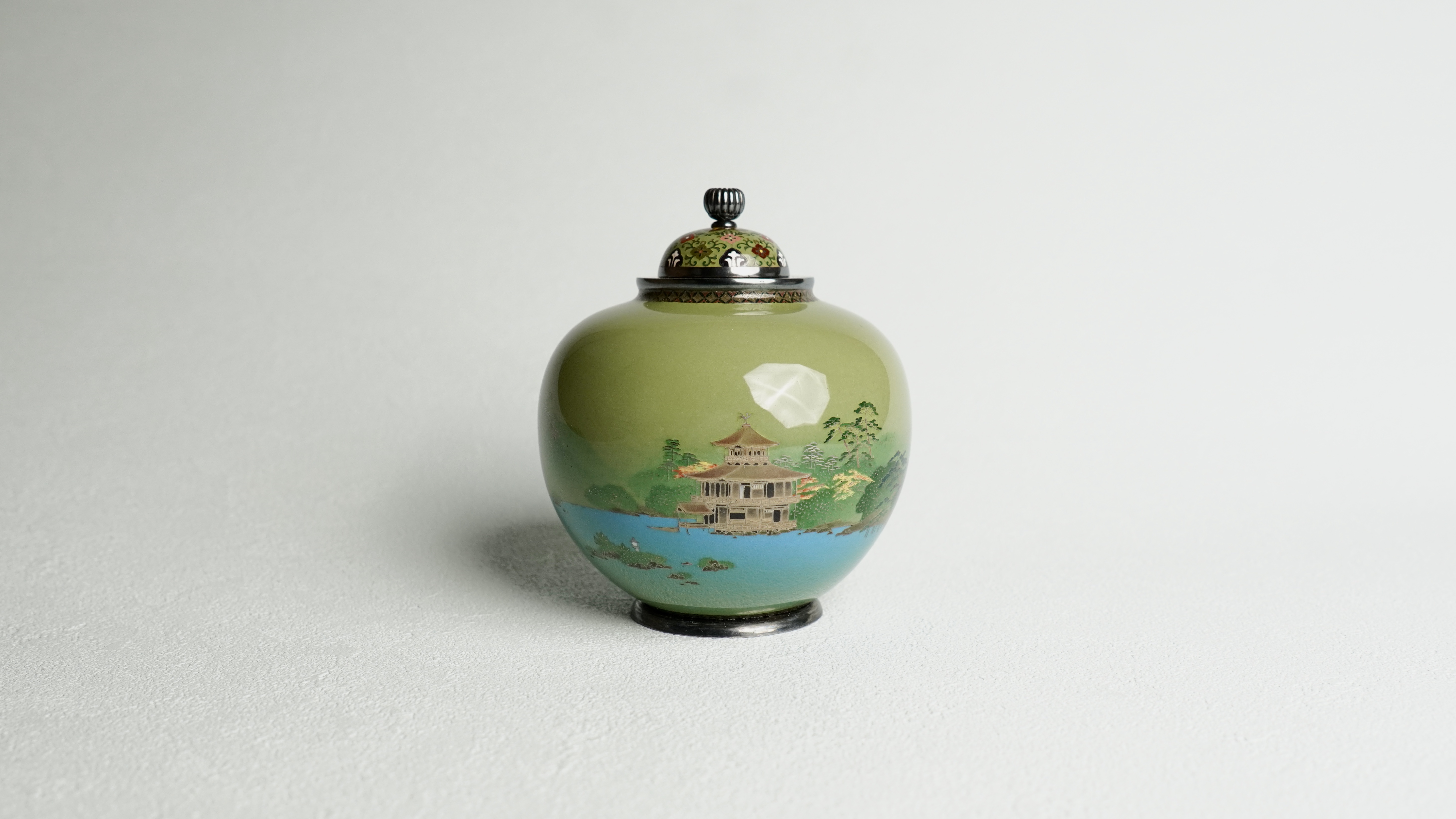
In his later years, Namikawa began to use colors other than black, such as green and white, for the backgrounds of his vases and plates, and he applied fewer lines than in his heyday.
The ink brush-like blurring and planting lines of his work also gave it the appearance of an ink painting. In the 1900s, he continued to pursue wired cloisonné until his retirement, while other cloisonniers showed interest in previously unknown techniques other than wired cloisonne, such as openwork cloisonne and foil-saving cloisonne.
Through various influences and his own research, Namikawa continued to pursue wired cloisonne enamel ware, and his works are characterized by a variety of colors and deep, clear luster.
The Relationship between Yasuyuki Namikawa and Sosuke Namikawa “The Two Namikawas”

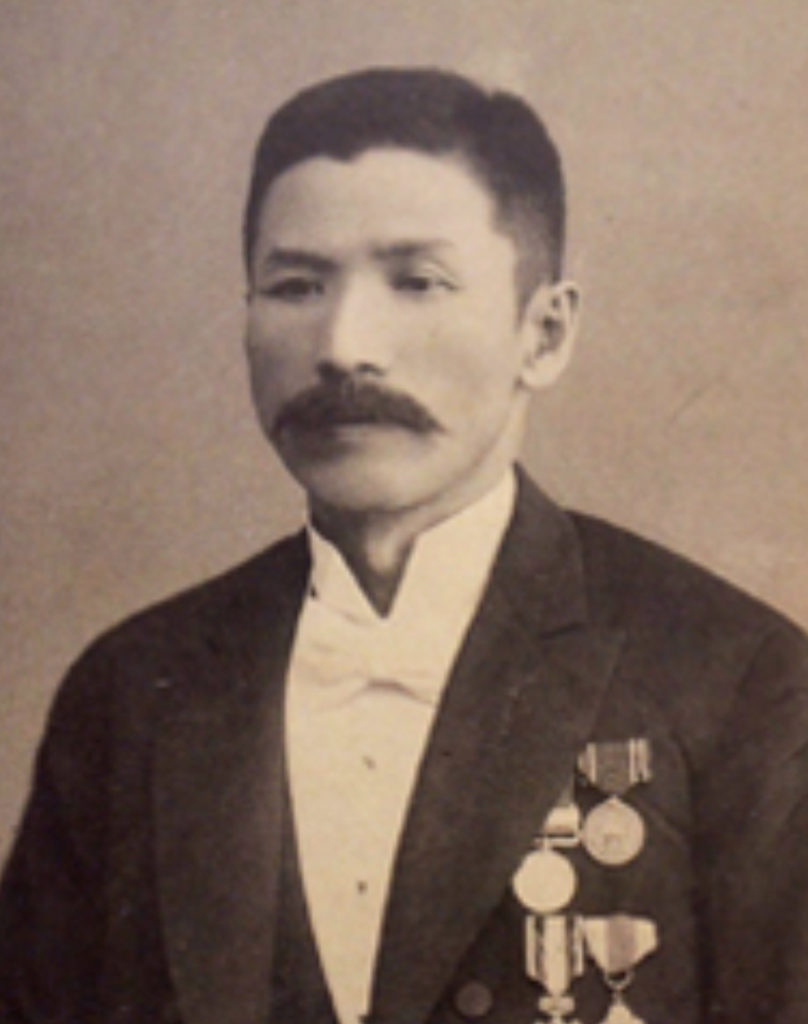
Yasuyuki Namikawa excelled in color and detail, while Sosuke Namikawa pursued different aesthetics, focusing on shape and structure in his works.
Yasuyuki Namikawa, who developed a black transparent glaze through his own research, mastered wired cloisonne enamel ware with his meticulous planting lines and excellent sense of color.
At the same time, Sosuke Namikawa established a technique called wireless cloisonne, in which glass glaze is filled in and fired by taking a line with a drawn boundary. Wireless cloisonne is characterized by its ability to express soft textures through the blending of neighboring colors.
During the same period, Yasuyuki Namikawa worked mainly in Kyoto and Sosuke Namikawa worked mainly in Tokyo, and they were called “Namikawa of the West” and “Namikawa of the East,” or “the Two Namikawas.”
Both men were certified as Imperial Household Artists, the highest honor established for the purpose of passing on and developing traditional Japanese craft techniques under the protection of the Imperial Household.
Yasuyuki Namikawa, who clearly expresses the gradation of vivid colors on the black background, and Sosuke Namikawa, who specializes in soft expressions, as if painted with a brush, such as shading and blurring using his original technique.
They were not only rivals, but also bound by deep respect and friendship. Their interaction has been passed down as a major episode in the cloisonne enamel ware world during the Meiji period. They highly valued each other’s work, respected each other’s techniques and expressions, and improved each other in the spirit of friendly rivalry.
Works by Yasuyuki Namikawa available for sale and viewing at [Ginza Shinseido]
Works by Yasuyuki Namikawa, a master craftsman so well known that they are in the collections of museums in Japan and abroad, are naturally rarely available on the market.
[Ginza Shinseido] has deepened its relationships with museums, overseas collectors, and overseas dealers, and has created its own channels.
Thanks to these efforts, Ginza Shinseido is the only store specializing in cloisonne enamel ware from the Meiji period, and we are always in possession of works by Yasuyuki Namikawa. It is the only gallery in the world where you can actually hold and purchase Yasuyuki Namikawa’s works, which you could only see through glass at art museums.
Ginza Shinseido also engages in cultural activities, such as lending its own works to exhibitions at art museums.

